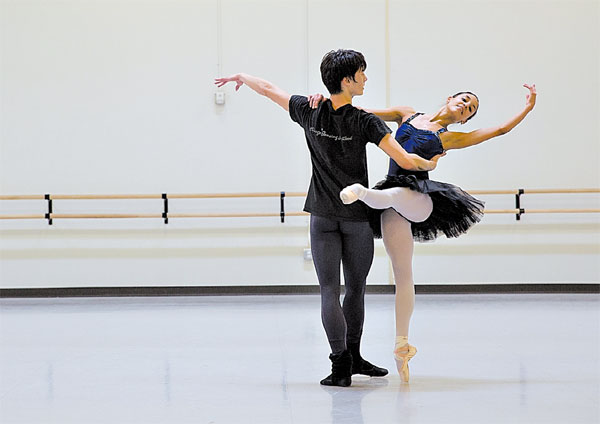Cuban defectors land on their feet
Updated: 2013-11-17 07:13
By Larry Rohter(The New York Times)
|
|||||||
PHOENIX - Cuba takes special measures to hold on to one of its most precious cultural resources: ballet dancers. To discourage defections, authorities sometimes keep talented performers from touring or warn younger artists that finding a ballet job will be tough in an unappreciative capitalist world.
But that did not discourage seven members of the premier company, the National Ballet of Cuba, who arrived in the United States this spring. And in a remarkable success story, all of them have landed positions, including the all-too-perfect case of Arianni Martin: She had the title role this month in Prokofiev's "Cinderella" with Ballet Arizona.
Barely six months ago, Ms. Martin, 21, and six other dancers, including her boyfriend, Randy Crespo, defected from the National Ballet while it was on tour in Mexico. The group arrived in Miami in April with no jobs, no money and no real knowledge of American life or command of colloquial English.
|
Among the premier ballet dancers who left Cuba this spring were Arianni Martin, at right, and Randy Crespo, who both joined Ballet Arizona. Chris Hinkle for The New York Times |
"We knew we were leaving everything behind, and we didn't know what awaited us," Ms. Martin said recently. "But we had to do it."
A dance career adds a layer of complexity to the classic Cuban defector story. Dancers are almost as highly esteemed as baseball players in Cuba, and are an elite group bolstered by the renown of the National Ballet and its 92-year-old grande dame, Alicia Alonso, who founded that company in 1948.
The defecting dancers said that to fulfill their personal and artistic aspirations, they needed to get away from a system that seemed frozen in time and subject to political favoritism.
To reach the United States, the group rode buses from the Yucatan to Nuevo Laredo, on the Texas border, 2,600 kilometers in all.
Once the dancers arrived in Florida, they were given shelter, support and training by the Cuban Classical Ballet of Miami. The director of that company, Pedro Pablo Pena, came to the United States in 1980, in the Mariel boatlift, so he understood the disorientation and uncertainty the dancers felt.
"Talent-wise, it can be difficult for them at the beginning, because there's a whole vocabulary they don't know, that involves a radical change in style from the classical ballet they're used to," Mr. Pena said. "My larger concern was that initially they were somewhat reluctant to express themselves."
For a country with barely 11 million people, Cuba has an unusually prominent profile in the international ballet world. Xiomara Reyes, a principal dancer at American Ballet Theater since 2003, is a product of the same program as the recent defectors.
To discourage defections, which have plagued the National Ballet since the 1960s, the company's directors have circulated horror stories of dancers who fail abroad. An unidentified official of the National Ballet told The Associated Press this spring that the situation of the group of seven could prove especially tough because they are "not yet known at the international level."
But after an impressive audition, Edward Gonzalez was quickly invited to join the Sarasota Ballet in Florida, and the speed with which he was signed, the others said, negated any doubts that may have been planted in their heads by Cuban government propaganda. Annie Ruiz Diaz and Luis Victor Santana, a couple, eventually signed on with the San Juan Ballet; Alejandro Mendez ended up here in Phoenix; and Josue Justiz is now with the development company of the Washington Ballet.
"The hardest thing was the realization that there's no turning back, that you've created this rupture in your life," Mr. Justiz, 21, said.
The dancers said the National Ballet of Cuba has a narrow focus and resists innovation. While praising the rigor of their training, the dancers used words like "stagnant" and "frozen" to describe the company's repertory, which focuses on a handful of classical ballets, like "Giselle" and "Swan Lake," and teaching methods.
"You feel like you're doing the same thing over and over," Mr. Gonzalez said.
With defections a constant threat, they said, the selection of dancers to go on tours is based not exclusively on talent, but also on a performer's perceived political reliability.
"I noticed that they can pick you for an international tour, and then, for one reason or another, you're not allowed to travel again for five years, an eternity when an artist's career is so short," said Mr. Mendez, 21. "So when I got picked for my first tour, to Mexico, boom, I was gone, out of there the first chance I had."
The New York Times
(China Daily 11/17/2013 page11)
